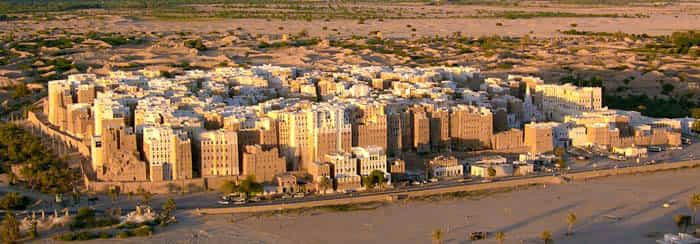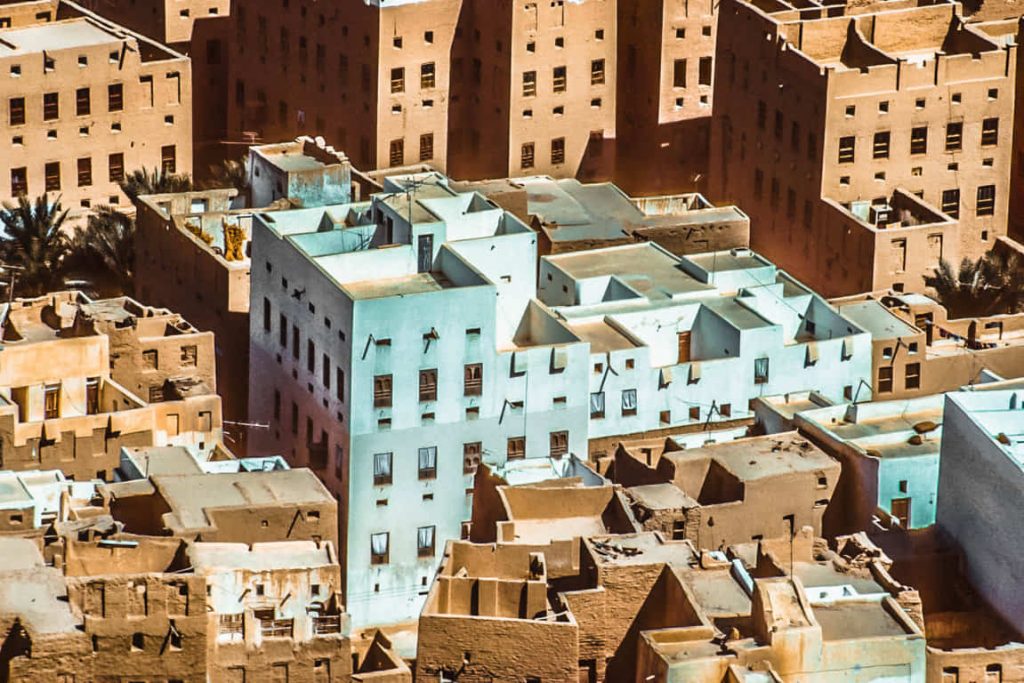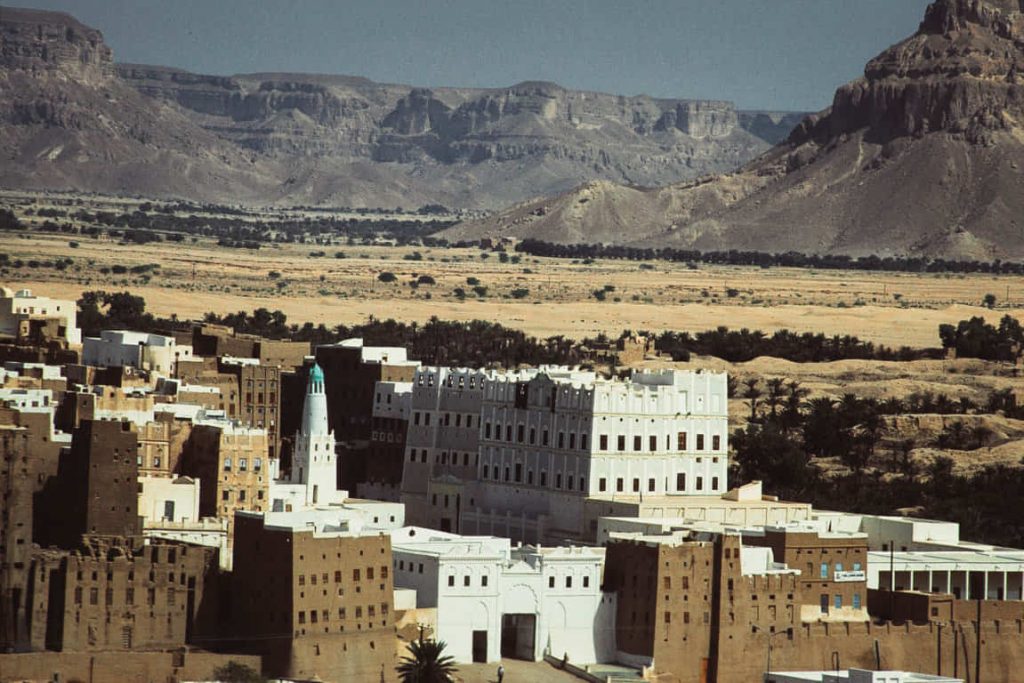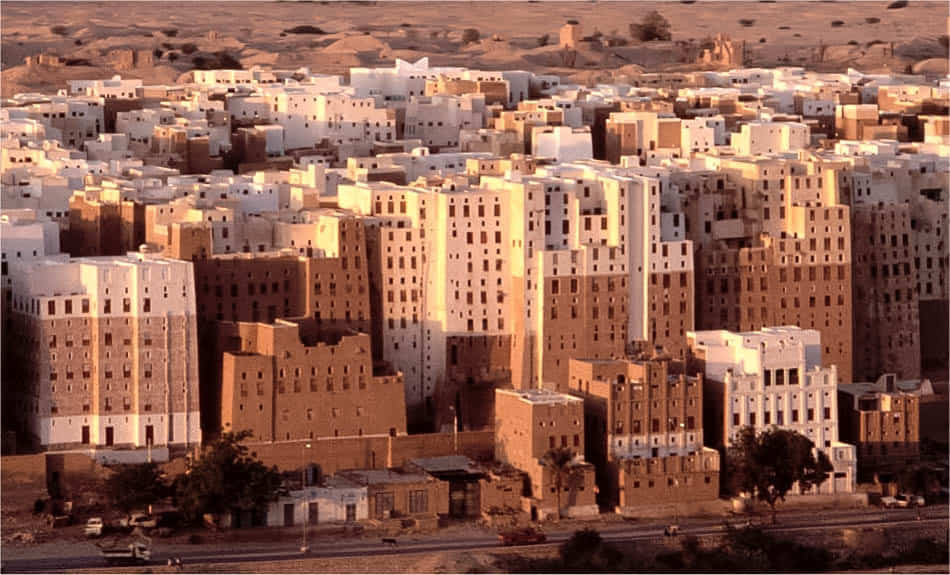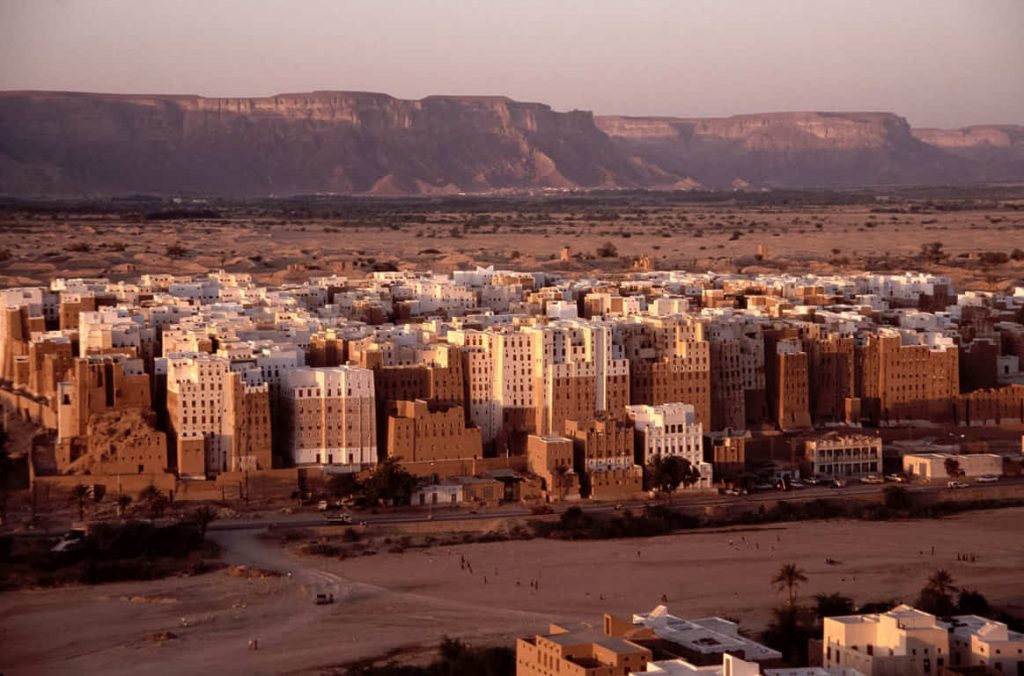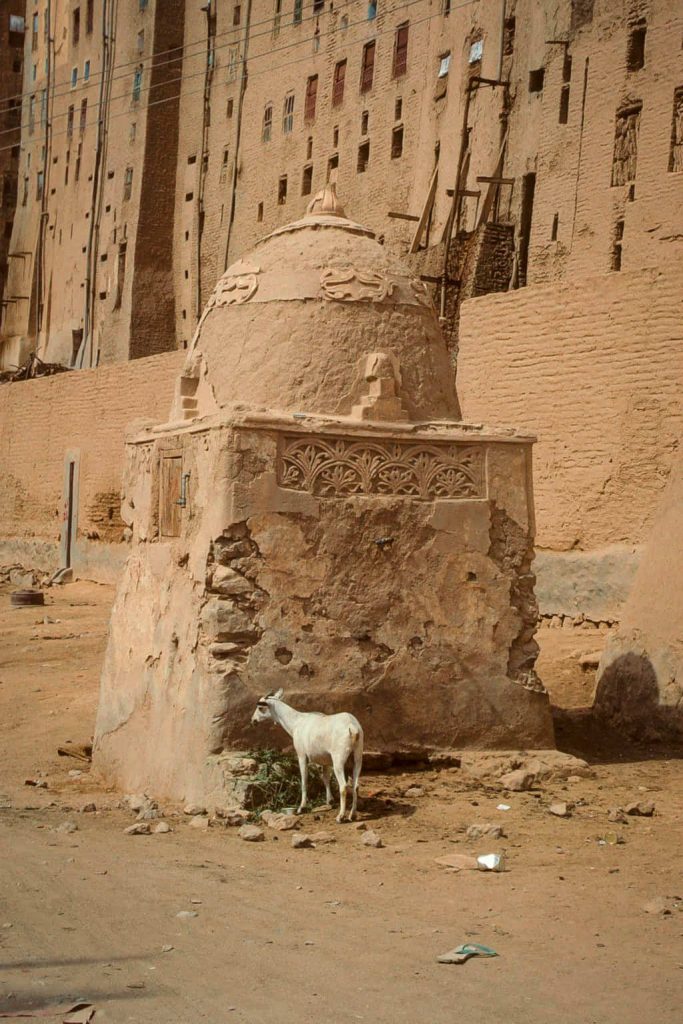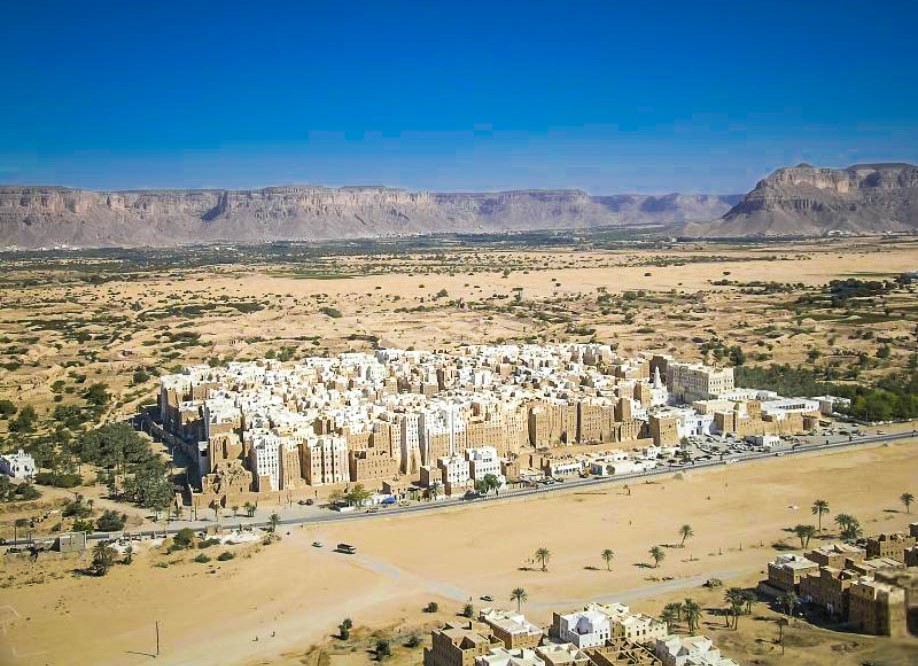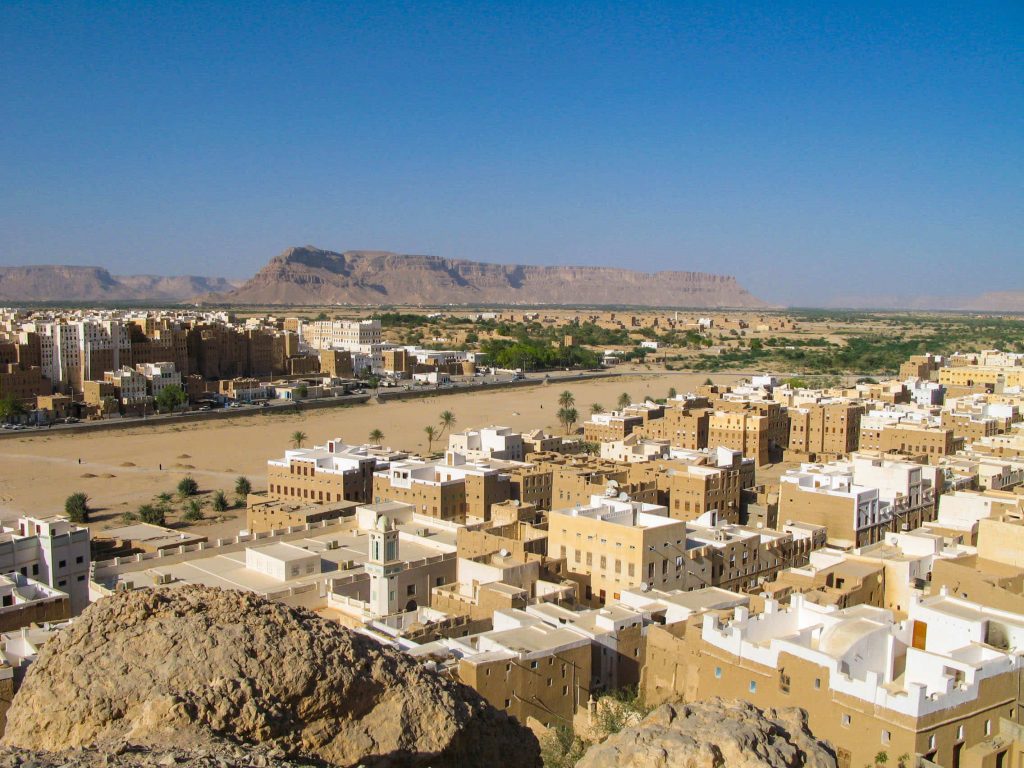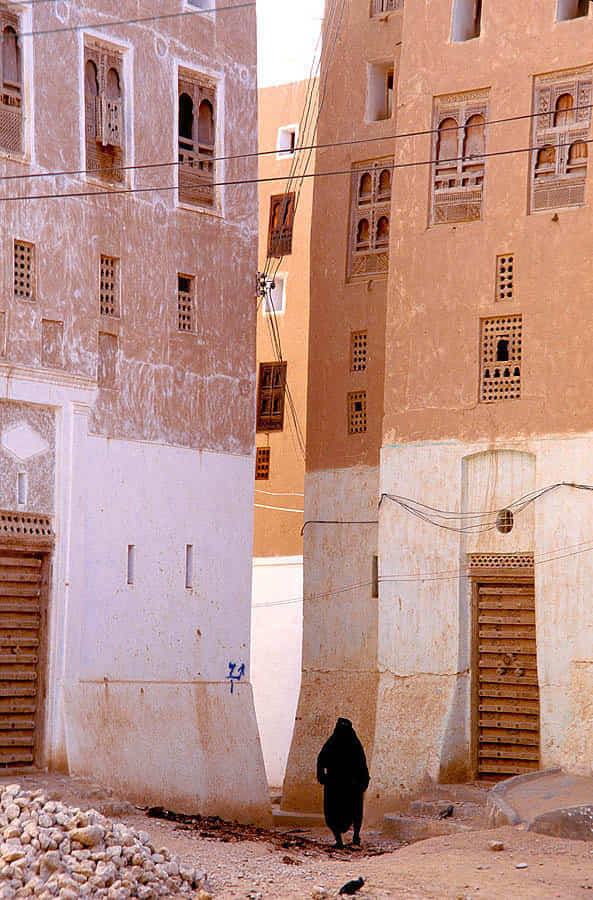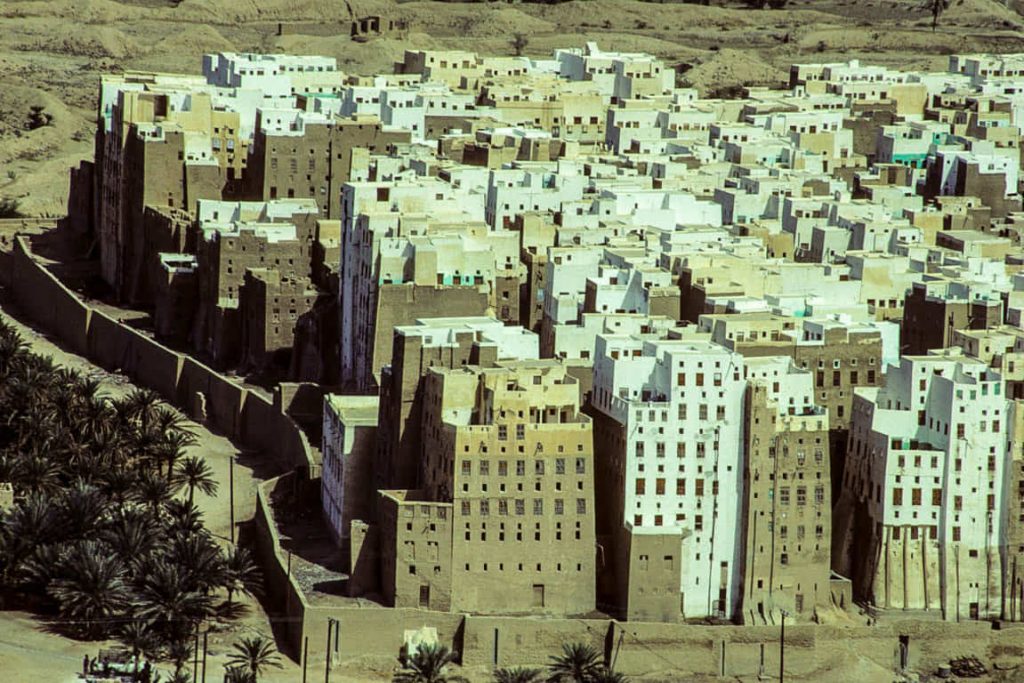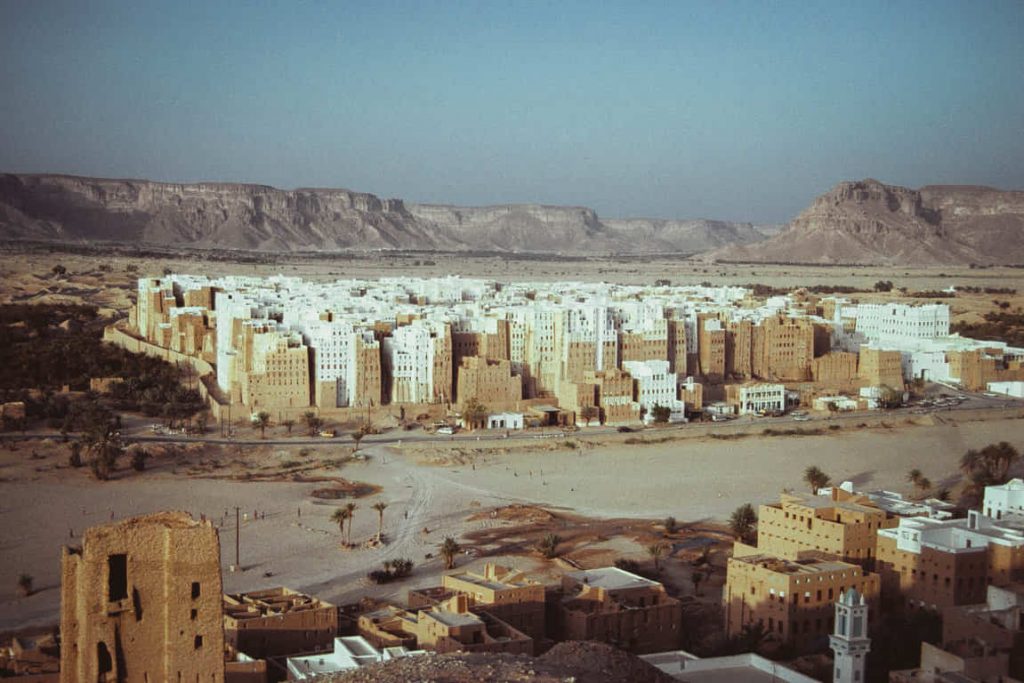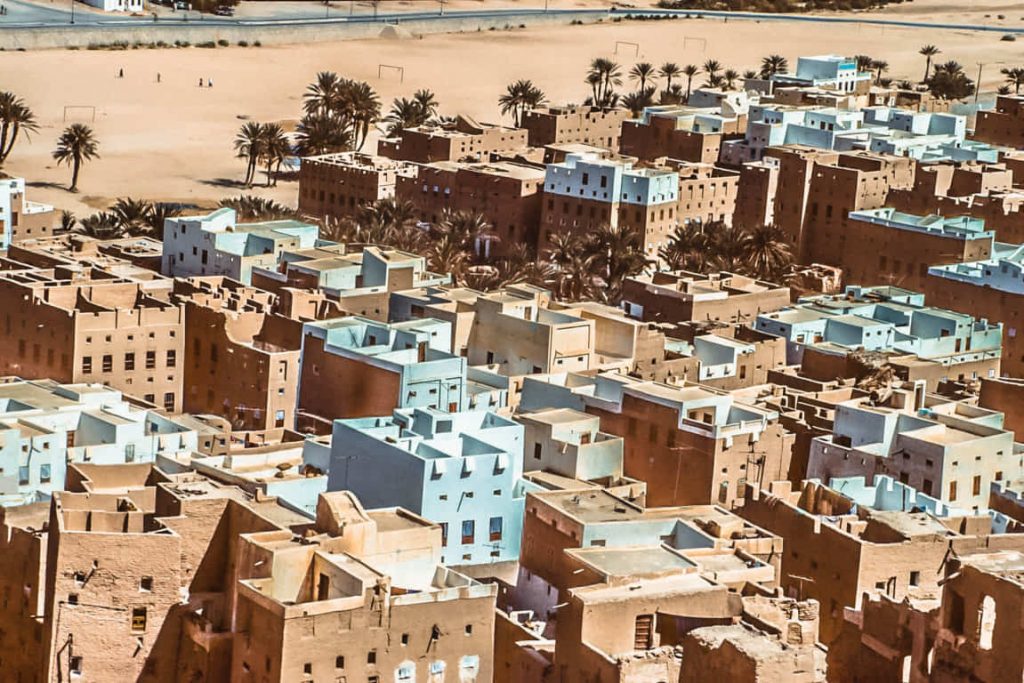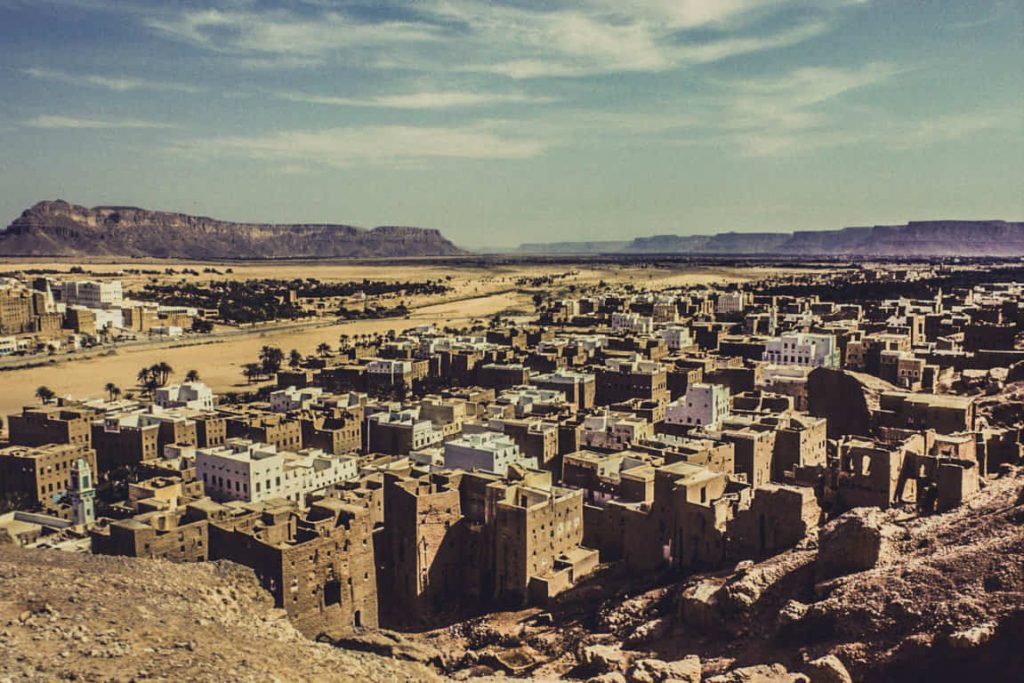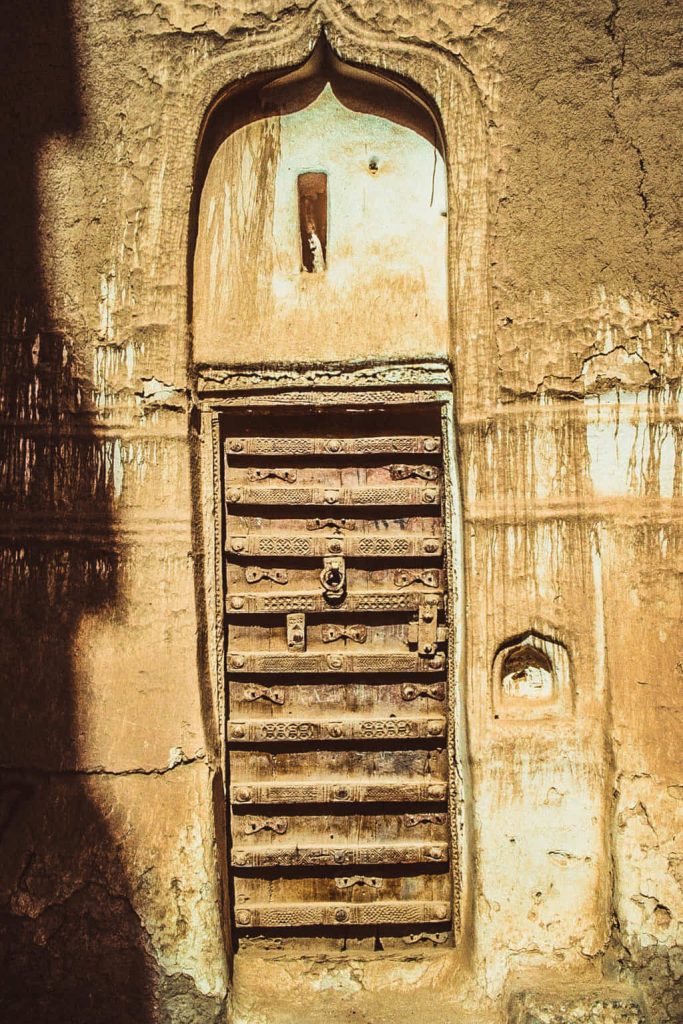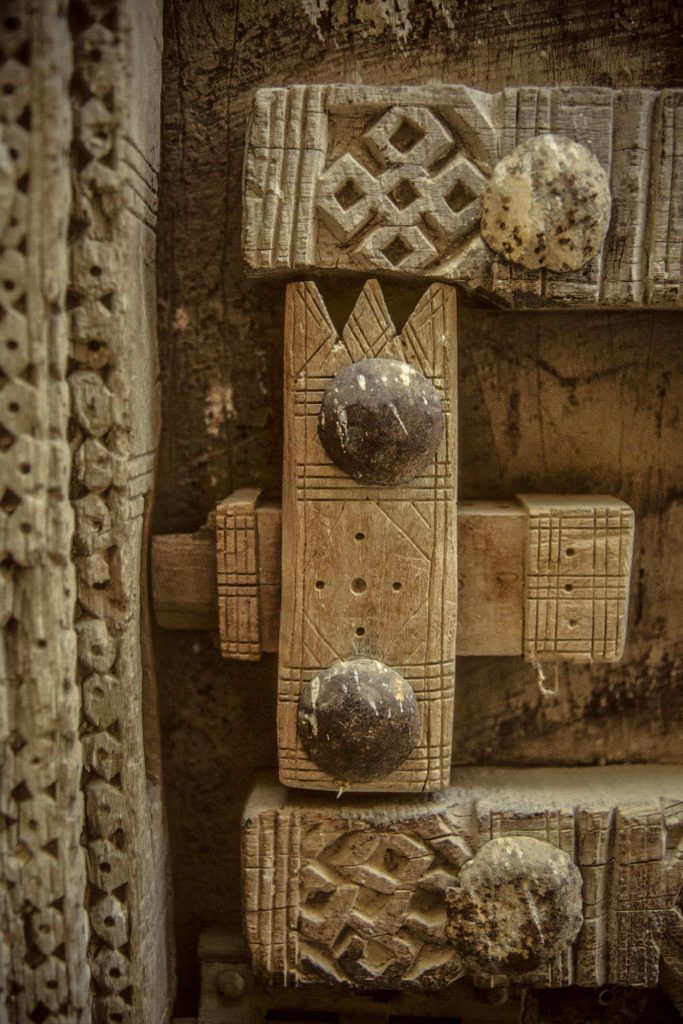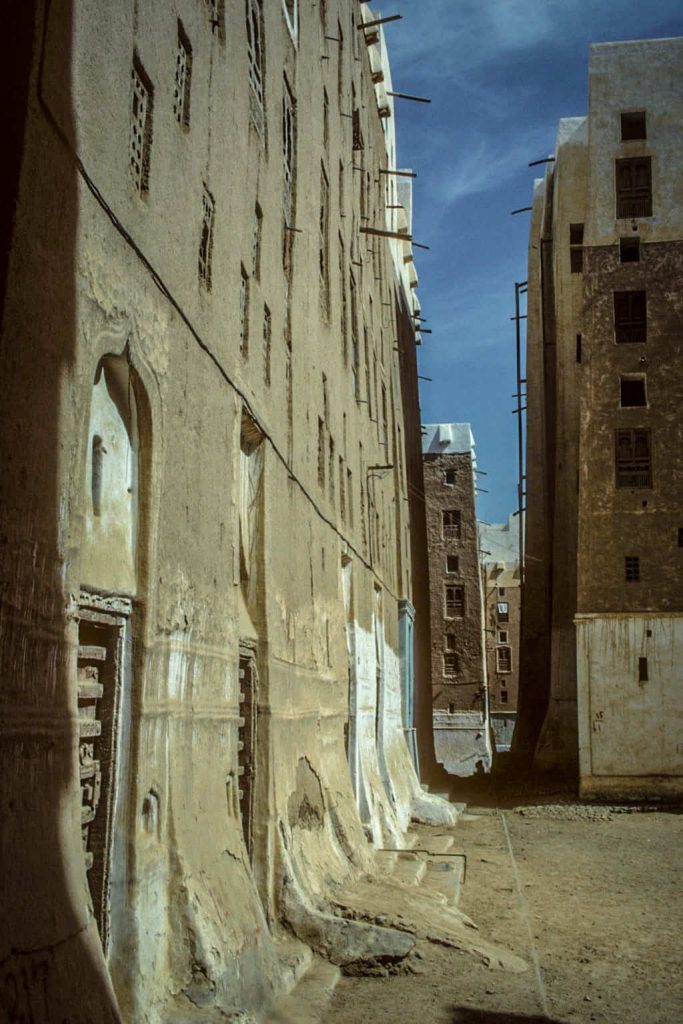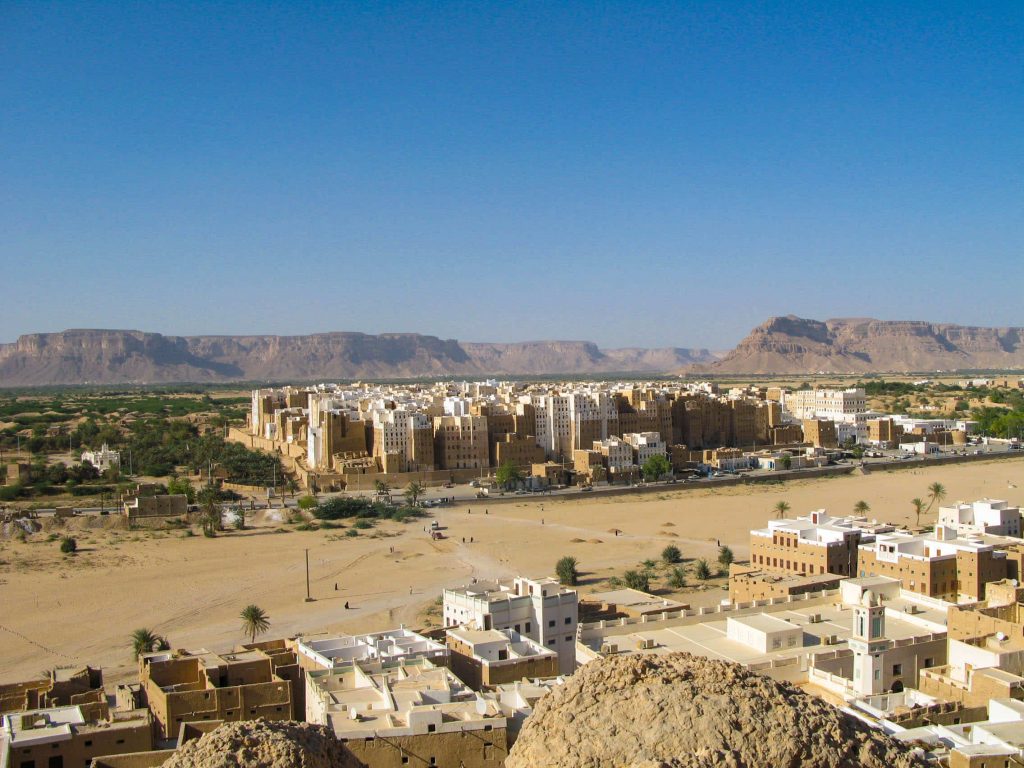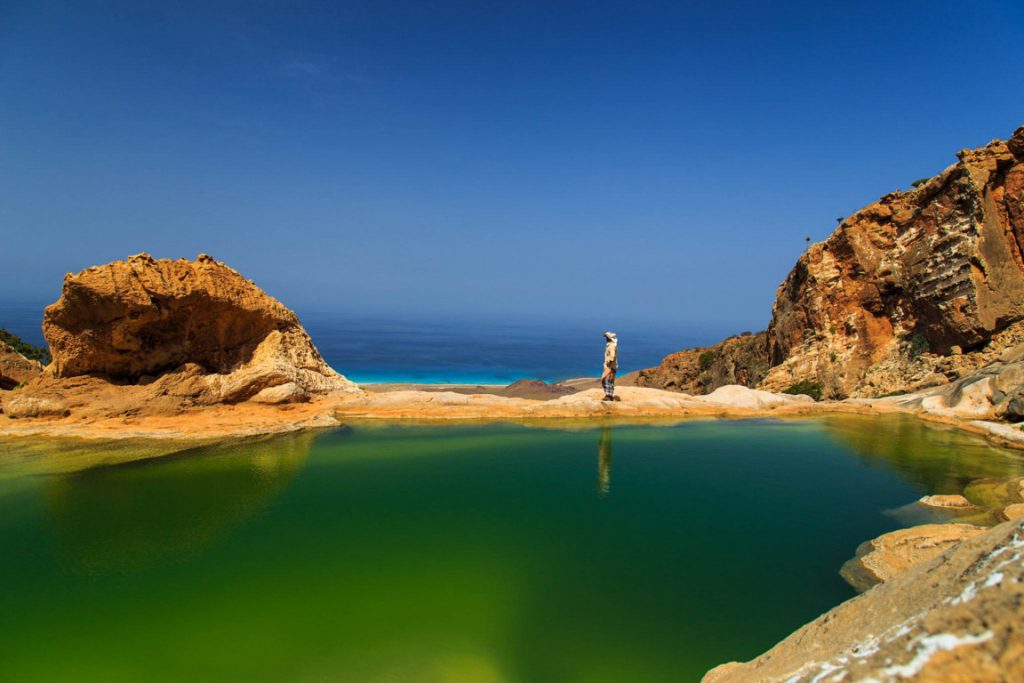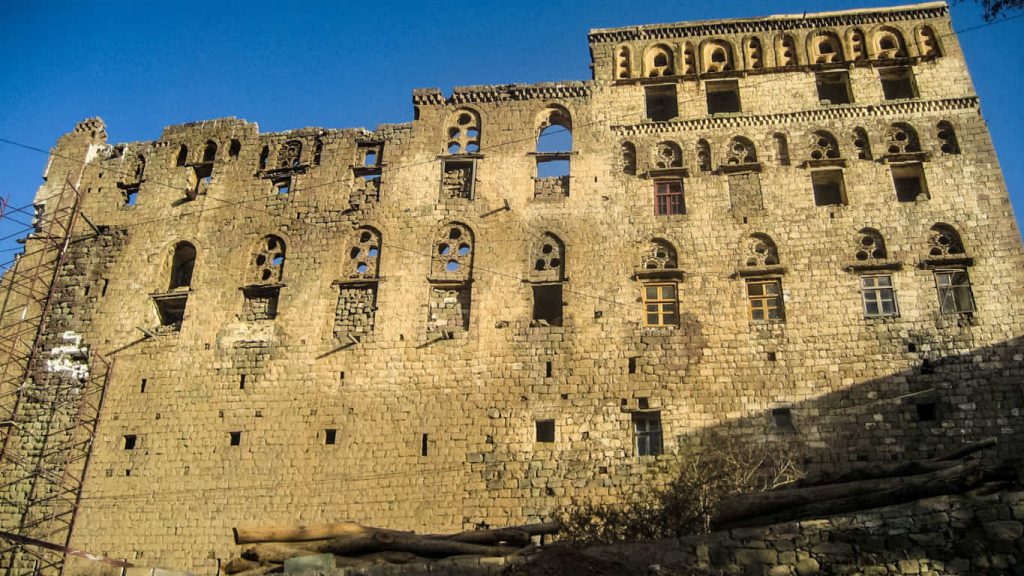Hadhramaut, Yemen
Coordinates: 15.921300, 48.636400
Nearby Places
- Al Kathiri Palace 16.10 Km E (80°)
- Tomb of Hz. Habib Ali al-Habashi رحمة الله عليه 18.72 Km E (79°)
- Tomb of Ahmad bin Isa al-Muhajir رحمة الله عليه 26.16 Km E (74°)
The oldest skyscraper city in the world
Shibam is often called “the oldest skyscraper city in the world” or “the Manhattan of the Desert”. It is one of the oldest and best examples of urban planning based on the principle of vertical construction. The city has some of the tallest mud buildings in the world, with some of them over 30 m (98 feet) high, thus being early high-rise apartment buildings. In order to protect the buildings from rain and erosion, the walls must be routinely maintained by applying fresh layers of mud.
The city is surrounded by a fortified wall, giving it the name “the walled city of Shibam”.
The nearby town of Tarim contains the tallest structure in the Wadi Hadhramaut valley, the mudbrick minaret of the Al-Mihdhar mosque. It stands at the height of approximately 53.53 metres (174 feet). This is the tallest minaret in the southern Arabian peninsula.
History
The first known inscription about the city dates from the 3rd century CE. It was the capital of the Hadramawt Kingdom.
In the 20th century, it was one of the three major cities of the Qu’aiti Sultanate, the others being Al-Mukalla and Ash-Shihr.
World Heritage
The city was listed with the UNESCO World Heritage List in 1982
In 2015, Shibam was added to the list of World Heritage sites in Danger when violent civil war erupted in Yemen. Historic buildings were significantly damaged during heavy bombing in Sana’a, and remain at risk from armed conflict.
During the Yemen Civil War, the city suffered some damage after insurgents detonated a car bomb. There was also coalition bombing in the area.
Other Threats
The mudbrick buildings are frequently threatened by wind, rain, and heat erosion. They require constant upkeep in order to maintain their structures. The city was heavily affected by flooding from a tropical cyclone in 2008. The foundations of many of the buildings in the city were compromised by the floodwaters, eventually leading to their collapse. It was also the target of an Al Qaeda attack in 2009.
Sources
Image Sources
146_Šibam
By Ljuba brank at Slovenian Wikipedia – Transferred from sl.wikipedia to Commons., GFDL, https://commons.wikimedia.org/w/index.php?curid=36688870
149_Šibam
By Ljuba brank at Slovenian Wikipedia – Transferred from sl.wikipedia to Commons., GFDL, https://commons.wikimedia.org/w/index.php?curid=36688871
15_Šibam_(10)
By Ljuba brank – Own work, CC BY-SA 3.0, https://commons.wikimedia.org/w/index.php?curid=47154453
15_Šibam_(12)
By Ljuba brank – Own work, CC BY-SA 3.0, https://commons.wikimedia.org/w/index.php?curid=47154457
Sibam
By Jacques Taberlet – Originally uploaded to Flickr, CC BY 3.0, https://commons.wikimedia.org/w/index.php?curid=6063609
1440px-Shibam1
By Aiman titi – Own work, CC BY-SA 3.0, https://commons.wikimedia.org/w/index.php?curid=17447466
예멘지리북동부사막_와디
By ko:User:Homoludens@Korean Wikipedia – ko:User:Homoludens@Korean Wikipedia, CC BY-SA 3.0, https://commons.wikimedia.org/w/index.php?curid=23242801
Shibam,_Yemen_34
By Hasso Hohmann, CC BY 4.0, https://commons.wikimedia.org/w/index.php?curid=88846177
Shibam,_Yemen_33
By Hasso Hohmann, CC BY 4.0, https://commons.wikimedia.org/w/index.php?curid=88846176
Shibam,_Yemen_32
By Hasso Hohmann, CC BY 4.0, https://commons.wikimedia.org/w/index.php?curid=88846175
Shibam,_Yemen_30
By Hasso Hohmann, CC BY 4.0, https://commons.wikimedia.org/w/index.php?curid=88846173
Shibam,_Yemen_31
By Hasso Hohmann, CC BY 4.0, https://commons.wikimedia.org/w/index.php?curid=88846174


